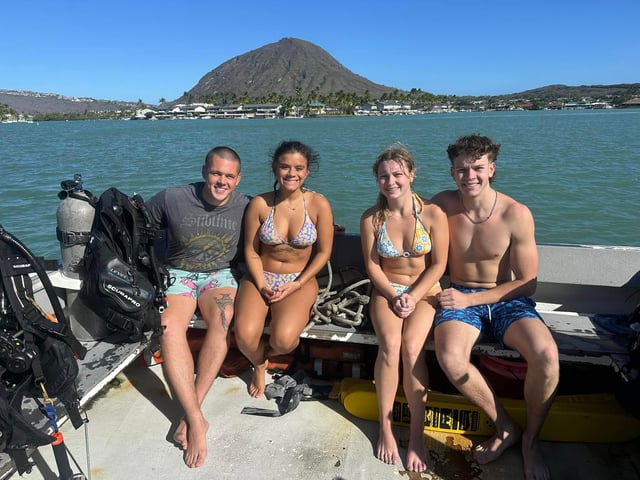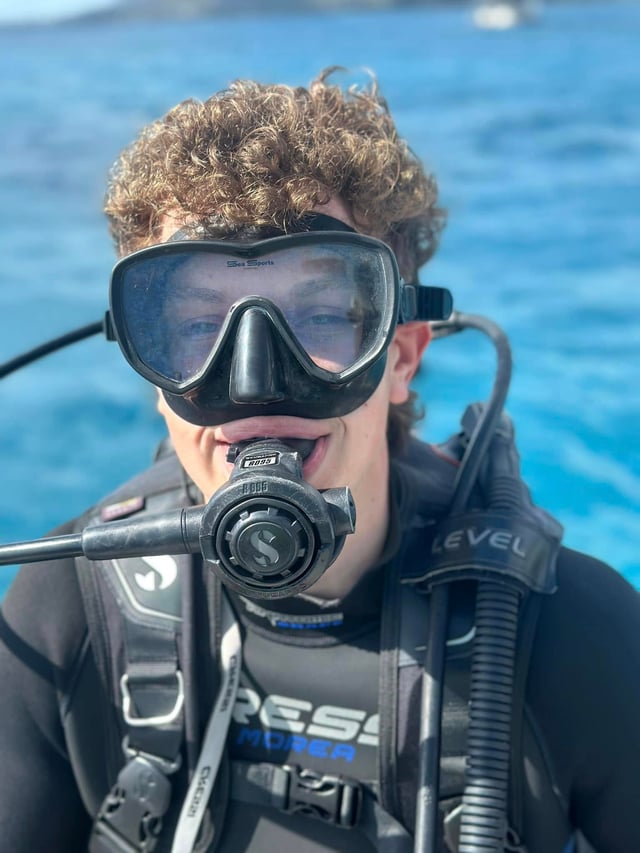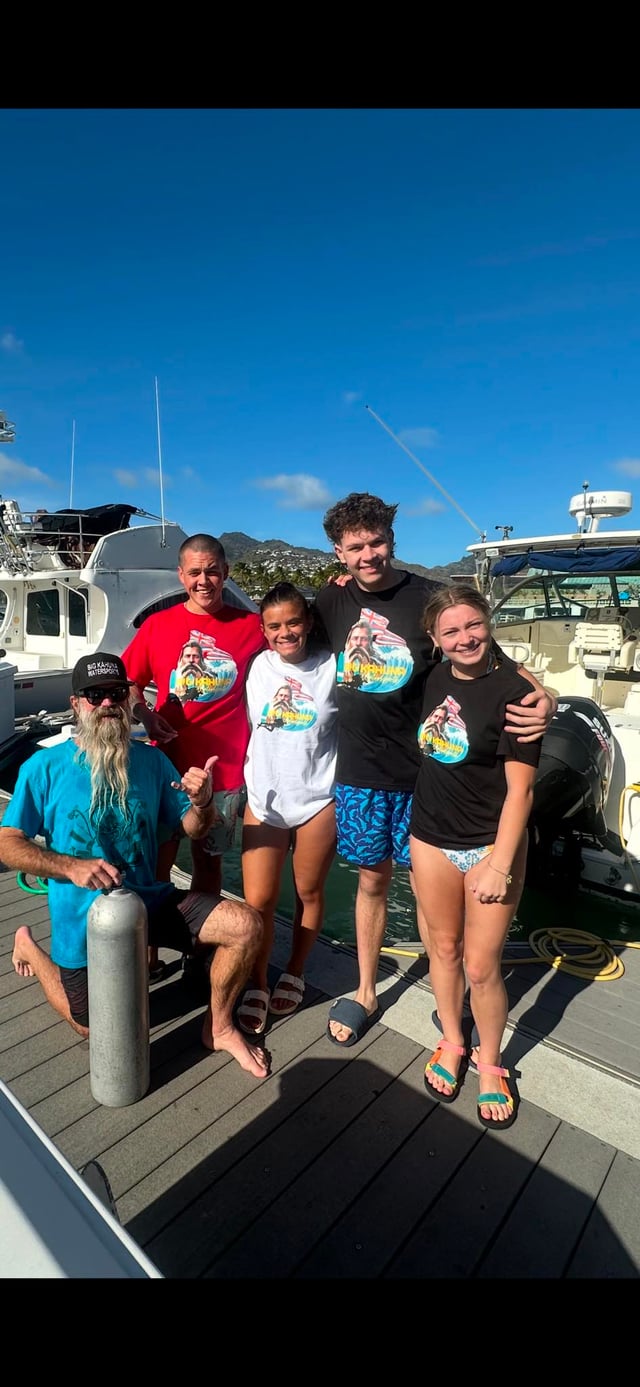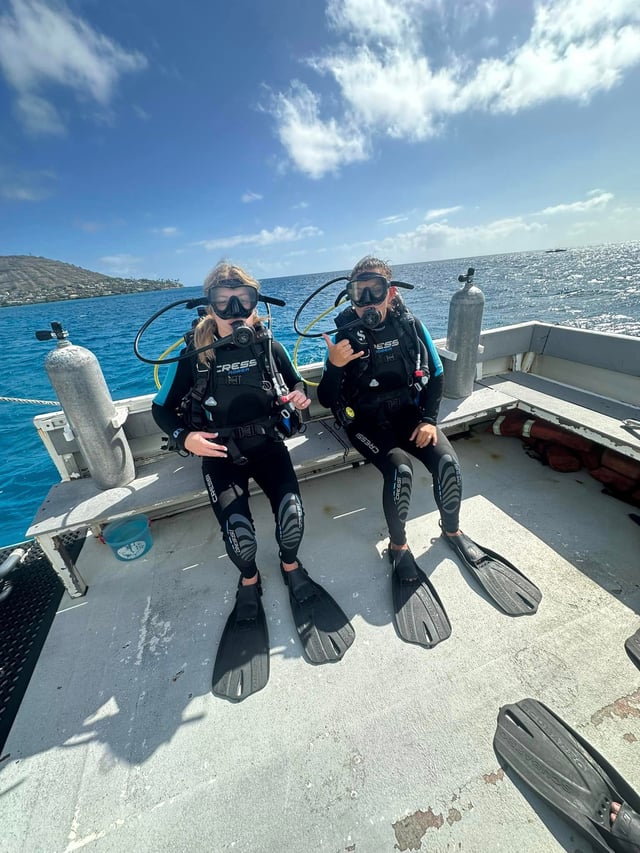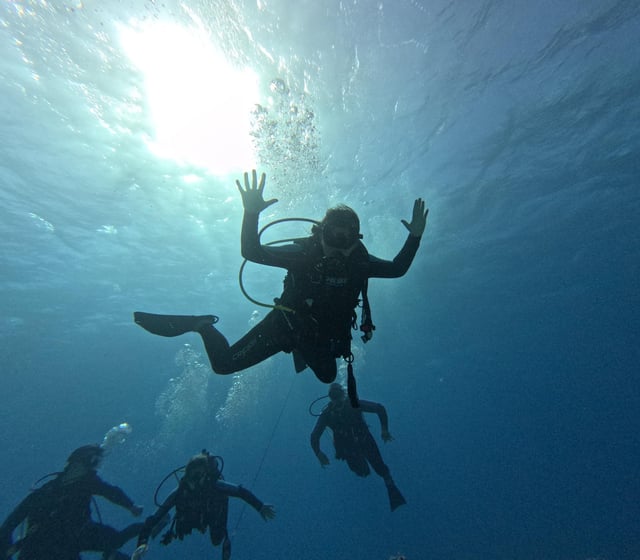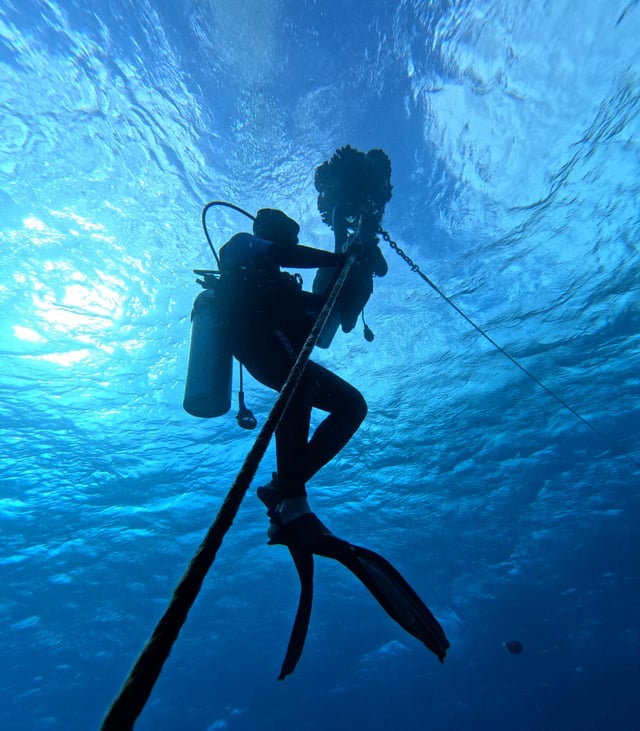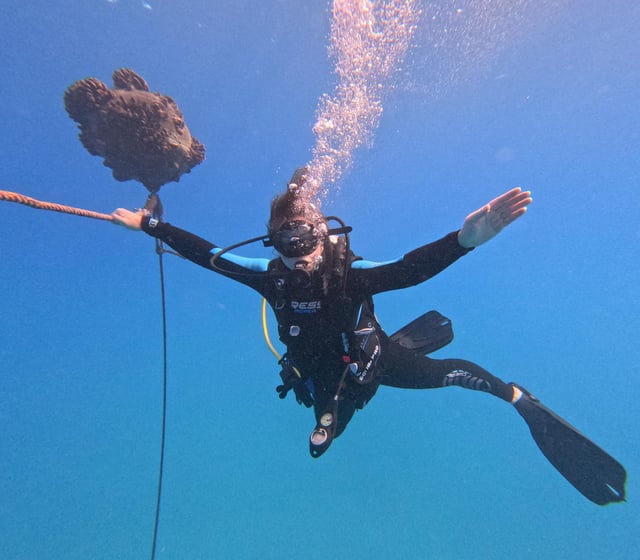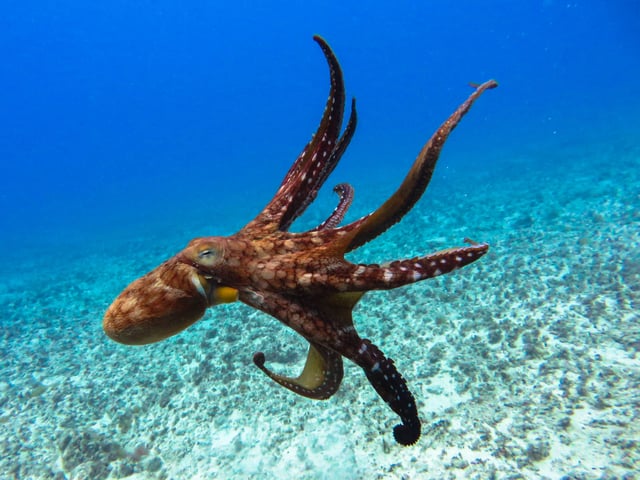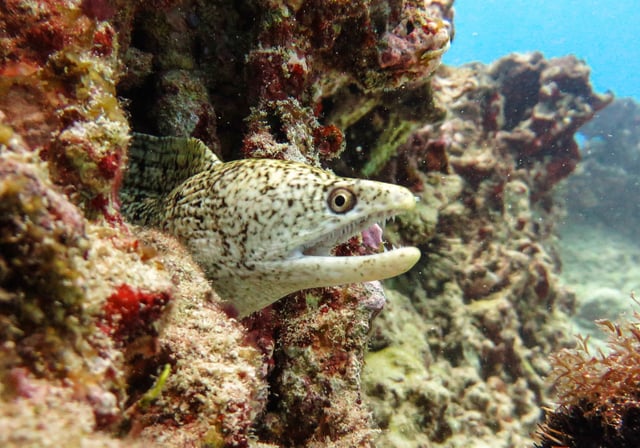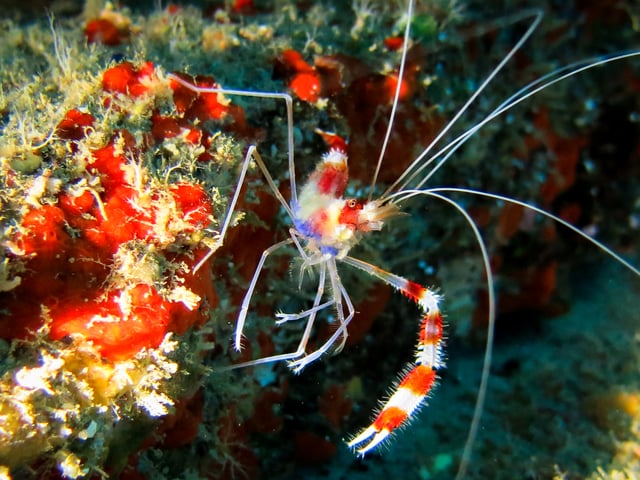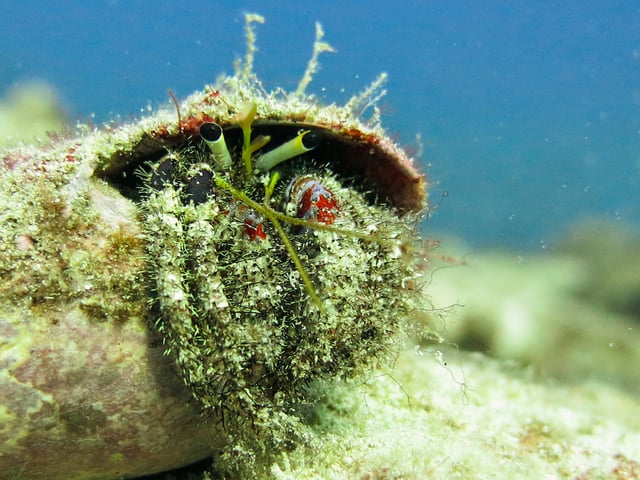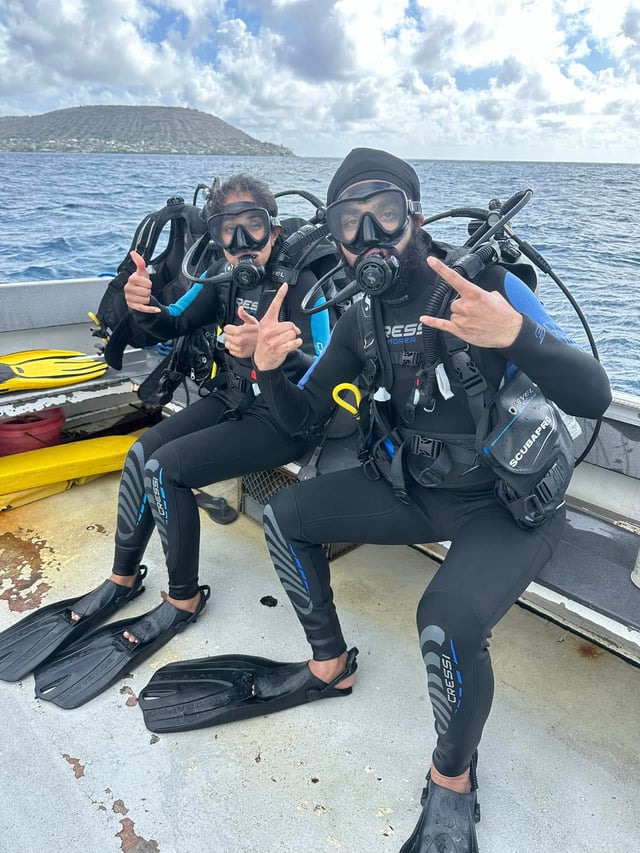Honolulu Certified Boat Dive
GuidedDuration: 3.5 hours
Features
Description
Explore Oahu’s Best Dive Sites on a Certified Two-Tank Boat Dive
Duration of Adventure
- 3.5 hours
Location / Where to Meet
- Check in/ Departure Address: 7192 Kalanianaʻole Hwy, Honolulu, HI 96825
- The boat leaves promptly on time, please arrive early.
- There is plenty of free parking near the shop.
Ages & Requirements
- Divers must be open-water certified.
- A minimum age of 10 years old and older is required.
- Participants should be in good health.
- Not recommended for elderly, disabled, or pregnant women.
- All participants must sign a waiver (sent with your confirmation email).
- All medical/physical restrictions must be declared at the time of reservation.
- There will be a medical questionnaire that must be filled out ahead of the dive. If you answer yes to certain questions, you may be asked to obtain a signed doctor's note clearing you for the activity. The questionnaire often used can also be searched as the PADI/DAN Medical Scuba Statement/questionnaire.
What’s Included
- 2 Tank Boat Dives
- Certified Divemaster
- Rental Scuba Gear: BCDs, wetsuits, regulators, mask, snorkel, fins, dive computer, etc.
Not Included
- Gratuity - Never expected but if you have a great experience, please consider gifting 10 to 25% to your instructors and captains!
- There are no prescription masks available, please rent one from another shop ahead of your class time if you need one.
What to Bring / Wear
- Swimsuit
- Towel
- Reef-Safe Sunscreen
- Extra layers of clothing - Sweatshirts and warm hats
- Dry bag
- Snacks & Water (reusable bottle if possible please)
- Certification Cards
- Required paperwork - Signed medical form if required, waivers, etc.
- Waterproof & Pressure Proof Camera (e.g. GoPros NEED the special DIVE case) - The company is not responsible for any damaged or lost items.
- Seasickness medications - If you are prone to seasickness, it is recommended to take sea sickness medication at least 30 minutes to 1 hour before the scheduled boat time. It is too late to take the medication if you are already seasick on the boat.
- Please remove any jewelry, watches, or anything that can get caught by the equipment or damaged by the water and pressure.
Wildlife Guidelines
Please be respectful of the fact that coral is a living organism and any standing, touching, or knocking over will irreparably damage the organism that takes a very long time to grow and is essential to our marine reefs. Please also be respectful of any marine animals including but not limited to turtles, rays, sharks, seals, and dolphins. Please never chase, harass, feed, or TOUCH any of the marine species. Enjoy their company if they approach from a distance and calmly move away from them if in their path.
ADVENTURE PROVIDED BY Big Kahuna Water Sports
FAQs
Can I fly after diving?
Flying directly after scuba diving is incredibly dangerous and could result in a life-threatening illness called the Bends/Decompression Sickness. The Divers Alert Network (DAN) guidelines for flying after diving include:
- A single no-decompression dive, a minimum preflight surface or any driving to above 1000 ft (305 m) interval of 12 hours suggested.
- Multiple dives per day or multiple days of diving, a minimum preflight surface or any driving to above 1000ft (305m) interval of 18 hours is suggested.
- Dives requiring decompression stops are recommended to have longer than 18 hours.
Please discuss with your dive guide ahead of time what is suggested!
Can I go hiking after diving?
Any activity that brings you above 1000 ft (305 m) can trigger the Bends/Decompression Sickness. Please check your hike elevation to ensure that at no time you will be going up in elevation. If the hike does go to elevation, you must treat it like a preflight interval as listed above in the flying FAQ.
Are there health restrictions for diving?
You need to be in reasonable physical health, certain conditions will impact if you can safely dive or not. Discussing with your doctor ahead of diving is the best way to check your eligibility to dive. There will be a medical questionnaire that must be filled out ahead of the dive. If you answer yes to certain questions, you may be asked to obtain a doctor's note clearing you for the activity. The questionnaire often used can also be searched as the PADI/DAN Medical Scuba Statement. It will be up to the divemaster if you can participate depending on your comfortability in the water in order to keep everyone safe.
What about sharks?
Incidents of sharks biting people in Hawaiian waters are very rare, occurring on average at a rate of about three or four per year. Fatal shark bites are extremely rare, especially considering the number of people in Hawaii’s waters. People who enter the water need to recognize that there are hidden dangers. A number of marine animals can cause serious injury to people, and sharks are just one example. Entering the ocean should be considered a “wilderness experience,” where people are visitors in a world that belongs to the sharks. The risk of injury caused by sharks is extremely small, but it is a risk accepted by anyone who enters the shark’s world. By learning more about sharks, using common sense, and observing the following safety tips, the risk may be greatly reduced.
What is your ratio of divers to Instructors/Divemasters?
For beginner first time Discover Scuba divers, the ratio is four beginners to one Instructor. For certified divers on our boat charters, the ratio is generally six to one.
How far is your shop location from Waikiki?
We are located in Hawaii Kai, roughly 20 minutes from Waikiki. The dive sites are all in Manaloa Bay with views of Diamond Head and Koko Head.
How far is your shop located from the North Shore?
We are located about an hour from the North Shore of Oahu. If you choose to take the scenic route down the east side of the island it will take longer than the views are with the trip.
Is this a beach dive, or a boat dive?
All our scuba diving is done off boats designed to make getting on and off easy for SCUBA divers and snorkelers alike.
When is the best time to dive in Honolulu?
The best time to dive in Honolulu is year-round, thanks to Hawaii’s warm, tropical climate and consistently good visibility underwater. However, certain months offer unique benefits:
- Summer (May to September): The waters are calmer, with temperatures ranging from 78–81°F (26–27°C), making it ideal for beginners and those seeking relaxed conditions.
- Winter (November to March): While there may be bigger swells, especially on the North Shore, many dive sites on Oahu’s south shore (including Honolulu) remain protected. Winter diving offers a chance to see migrating humpback whales from the boat.
- Overall: For the best underwater visibility and calm seas, late spring to early fall is preferred.
What kind of fish will we see?
Honolulu's waters are teeming with colorful marine life, including many species found only in Hawaii. On your dive, you might encounter:
- Reef Fish: Yellow tangs, butterflyfish, parrotfish, triggerfish (including the state fish, the humuhumunukunukuapua’a).
- Eels: Moray eels peeking out from coral crevices.
- Turtles: Green sea turtles (honu) are commonly spotted on most dives.
- Other Creatures: Octopuses, rays, monk seals, and occasionally reef sharks or dolphins.
Will we get to see turtles?
Absolutely! The Green Turtle is a Federally Protected Species and with the lack of human harassment they are very calm and tolerant of scuba divers. Our usual dive spots are where they like to rest on the sand for shell cleaning by cleaning fish.
Is it safe to scuba dive while pregnant?
No, we can, however, still take you snorkeling.
I tend to get seasick on boats, what do you recommend?
We recommend taking a motion sickness pill the night before and the morning of your dive.
Is there a bathroom on the boat?
Yes, our boat has a bathroom, or in boating terms, a "head."
What sunscreen can I use and why does it matter?
Common sunscreens contain chemicals that can harm coral reefs, as the particles are small enough to be absorbed by corals, causing toxicity and coral bleaching. Reef-friendly sunscreens are formulated without these harmful chemicals. Reef-SAFE sunscreens go a step further by using non-nano particles, which are too large for corals to ingest, helping to preserve marine ecosystems.
Please avoid sunscreens with oxybenzone, octinoxate, and parabens. Consider wearing sun-protective clothing, like long-sleeve rash guards, as an alternative to sunscreen. If you choose a mineral-based sunscreen, ensure it is labeled ‘non-nano.’
Cancellation Policy
Customers will receive a full refund or credit with 24 hours notice of cancellation. Customers will also receive a full refund or credit in case of operator cancellation due to weather or other unforeseen circumstances. Contact us by phone to cancel or inquire about a cancellation. No-shows will be charged the full price.
Availability
Reviews
Location
Address
7192 Kalanianaole Hwy.
Honolulu, HI, 96825
US
ASK THE LOCAL EXPERT
✔️Best price guarantee - book direct with the outfitter
✔️Trusted local outfitters, vetted for quality
✔️Free cancellation on most adventures
Discover 5,000+ handpicked human powered adventures.
Book directly with vetted local experts.
Average 4.8 ⭐️ across 185,000 reviews.
Every booking contributes to conservation.
Proud member of The Conservation Alliance and Leave No Trace.
